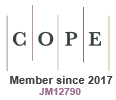Just Accepted
This article has been peer reviewed and accepted for publication. It is in production and has not been edited, so may differ from the final published form.
Patterns of breeding in the parma wallaby revealed by camera trapping in northern New South Wales and insights for post-wildfire recovery
Abstract
Understanding breeding patterns of mammals can be critical to understanding how they may be affected by disturbances such as wildfire, and to formulating conservation programs. I describe the breeding pattern of the parma wallaby (Notomacropus parma) on the New England Tableland in northern New South Wales. Remote cameras that operated continuously over a 17-month period produced frequent detections of parma wallabies at 17 sites. Camera images produced evidence of breeding in the form of females with obvious swollen pouches and young-at-foot. This evidence suggested 45 separate breeding events were documented. Published records of offspring development were used to estimate birth months. Births occurred in every month except August. On a seasonal basis, few (11%) occurred in winter and most occurred in spring (38%). Females produced 1–4 young per site, equating to 1.9 per year per site. This frequency of offspring production aligns with what has been described in captivity, suggesting breeding was not impaired 3–4 years after a wildfire. This study has further confirmed the potential to use camera trapping to describe aspects of the breeding pattern in a cryptic marsupial.
AM24034 Accepted 12 June 2025
© CSIRO 2025



